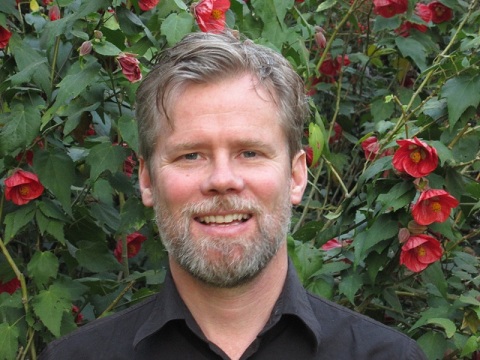Today is a sparkling, cloudless spring day in Mountain View, California. I just got back from watering my just planted vegetable garden. The sun embraced me with a rare, outrageous luminosity. The trees mesmerized with many shades of vivid and luxurious green. I felt wonder and gratitude at the simple pleasure of being outside. It’s one to remember, a gem among gems as we’re blessed with good weather almost year round. I’m also a third of the way through my #LocalYear life experiment. It’s as good a time as any to report on my #LocalYear progress.
To review, I made a commitment in January to live as locally as possible focusing on three areas — personal behavior change, community projects, and engagement with local government.
In early March, I added some additional commitments to give my experiment more teeth. These were more specific and measurable including one hour of #LocalYear activity per day, start everyday with a meditative walk, local shopping only, offset all my greenhouse gases for the year, no screens for entertainment, and only two hours of social media per week.
Two weeks later, shelter in place orders were issued for six Bay Area counties including ours. Schools were closed and I started homeschooling my son with virtual help from other teachers. This turned our lives and my life experiment upside down. For example, it was an exceptionally inconvenient time to limit online entertainment and shopping. On the other hand, I had connected my neighbors beforehand through my Cool Block project, which was fortunate for everyone involved.
How did I adjust?
First, and by necessity, I shifted my activities to focus more on personal change and community projects. Engagement with local government became more difficult, though I’ve engaged electronically a few times, like taking a school district survey and sending an email to the city council recommending changes to a bike lane expansion plan.
My neighborhood became a focal point during shelter in place with scheduled Zoom check in calls, grocery runs for vulnerable neighbors, exchanges of baked and other goods, and an ongoing food drive for the hungry in our town.
The Cool Block program I started was an important catalyst for this increased activity. This is a remarkable, daily felt change now that 20 of us neighbors interact regularly virtually and at a safe physical distance. Our neighborhood Slack group has helped a lot. I believe I’ve spent an average of an hour a day on just this alone, though I haven’t kept strict track of time. In any case, I’m spending way more time on these activities, which I’m enjoying. It also has more meaning for me and others now that the pandemic has shown us that our fates are tied.
Another success is in shopping. I’ve done zero online shopping. I just quit and it was easy. That might be because my online shopping was focused mostly on one site — Amazon.com. I just quit buying from them and I wasn’t in the habit of buying anywhere else online regularly. The net effect of this plus reduced pandemic spending is that I’ve dramatically reduced my personal spending.
I’ve done less well with chain store shopping. The challenge is two-fold. First, you really have to go out of your way to avoid chains. They dominate the retail industry. For instance, there are no independent gas stations in our area and haven’t been for about a decade. The grocery market is similar, though there are two, small specialty markets that I patronize frequently. However, they’re often much more expensive and don’t carry everything I need. I found a similar challenge with drug and hardware stores. Second is the cognitive challenge. It’s such an ingrained habit to just wander into any old store as I like. It’s been difficult for me to be that mindful about my purchases 24/7.
While we’re exploring the topic of buying local, let’s take a short detour to consider the puzzling case of Ace Hardware, my local hardware store. Each Ace store is independently owned, but part of an international chain that’s organized as a cooperative. The independent, local retailers govern and own the chain. The buying power of the chain helps independent retailers compete with big hardware chains. The model is extremely successful — Ace Hardware is the world’s largest retail hardware cooperative with over $5 billion in sales (2015). So Ace is both locally owned and a chain. So do I stop shopping there? I kept going back and forth on this one, but ultimately decided it’s OK since the cooperative chain store structure actually makes the locally owned stores stronger.
An unexpected side effect of buying local is that it has shifted my attention from what I can buy to what I already have. I’m reading unread books I already own and am eating down the surplus stock of canned and other food in our house. That’s been satisfying.
On screens — I quit watching Netflix by myself cold turkey. I used to watch shows by myself after dinner, which is nuts when you have a family. Since quitting Netflix, I’ve watched just a few non-Netflix shows and occasionally played games, but almost entirely with other family members at their urging. These incidents were by far the exception rather than the rule. In any case, I’ve greatly reduced my solo leisure-time screen use. My wife Andrea also instituted a Friday movie night using an old digital projector. This was in response to my screen use commitments, a clever workaround by her.
Now for the failures.
Social media has been a disaster. I’ve actually regressed. I had to use social media more for Shareable once the pandemic broke. That led to more impulsive use of it.
I also found it impossible to not watch the pandemic break in real time on Facebook. I also felt a deep urge to witness the pandemic unfold in real time on Facebook. Seeing the many ways my friends were reacting helped me understand what was happening in the world, but also in the personal lives and minds of my friends. Unfortunately, that came at a price. My increased social media use has led to poorer mood and sleep to the point that my family has noticed my increased irritability.
I’ve also failed to start every day with a walk. I love to walk and know I’d benefit from starting my day that way. However, I’m driven by curiosity. I wake up wanting to know what’s happening in my work and world. Thus, email, social media, and news are like catnip to me. Mornings can also be a busy time for the family. The result is that I haven’t started my day with a walk even once. While disappointing, there’s a bright spot — I have taken a walk or meditated every day. Bottom line, I’m getting the benefit I wanted — improved mood and mindfulness — just in a different way.
While my progress has been uneven, the quality of my life has improved. I can feel the difference. At the same time, I feel like I bit too much off with these goals. Some are a distraction because they’re impractical or impossible. I need to simplify them so I can focus on where I’m getting the best results — the activation of my neighborhood. With these considerations in mind, I’m recasting three of the five goals:
New goal #2: meditate or take a walk every day. Old goal: start every day with a meditative walk.
New goal #3: no online shopping and reduced chain store shopping. Old goal: no online or chain store shopping.
New goal #5: no use of screens for solo entertainment. Limit social media use to one hour during workdays (no evening or weekend use). Old goal: no use of screens for entertainment, only two hours of social media per week.
I’ll try this for a month and report back on my progress. Wish me luck.
##
This post is part of Neal Gorenflo’s year long experiment on living locally (#LocalYear). Follow his journey by reading the other posts in his series:
- How we can avert our society’s drift toward disaster by charting a different course
- My uneven first steps in #LocalYear
- Knocking doors for Cool Block with my son Jake
- Despite jitters, I succeed in hosting a Cool Block introductory gathering
- Time to give my #LocalYear teeth: 5 commitments to spur a more local lifestyle
- Things got a whole lot more local than I expected due to coronavirus
- My new pandemic routine
- April is the cruelest month and a call to care









